Variety Mondays: Call of the Sea
Welcome to MGR Variety Mondays! For the first episode of this new series, I have selected 'Call of the Sea' - the acclaimed 2021 adventure puzzle game created by Tatiana Delgado and Out of the Blue.
Welcome to MGR Variety Mondays! For the first episode of this new series, I have selected "Call of the Sea" - the acclaimed 2021 adventure puzzle game created by Tatiana Delgado and Out of the Blue (Madrid, Spain).

Intro and Overview
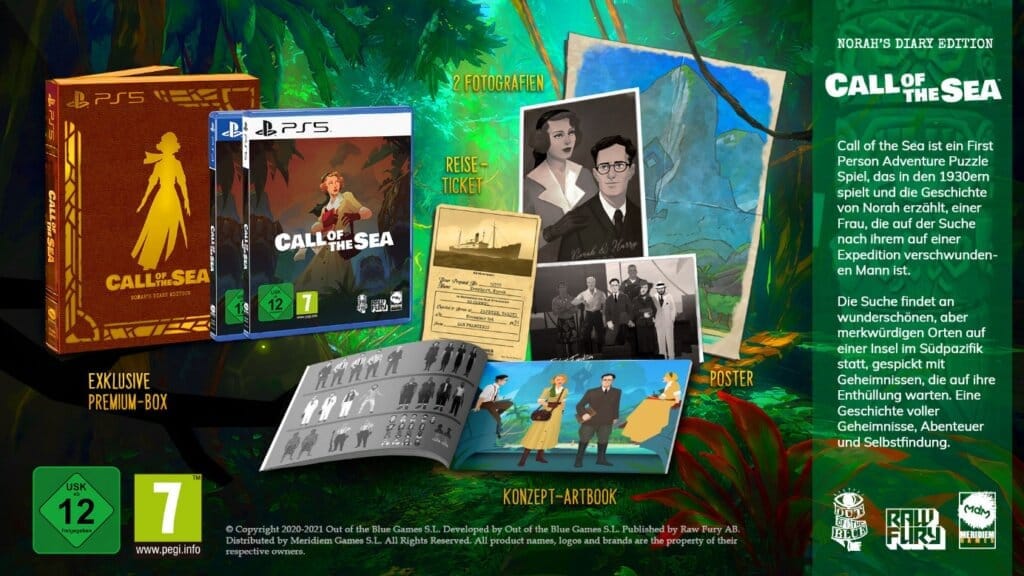
"Call of the Sea" entered my life as a gift from my better half, who recommended it as an excellent follow-up to "Firewatch" and "Stray"—two of my all-time favorite games. I was eager to learn more about the game and recognized it immediately; the iconic poster featuring Norah against the backdrop of the mysterious island had lodged itself in my memory. Knowing that "Call of the Sea" was centered on the unique tale of a female character-driven narrative set during the Lovecraftian era, I was truly excited to embark on this new adventure!
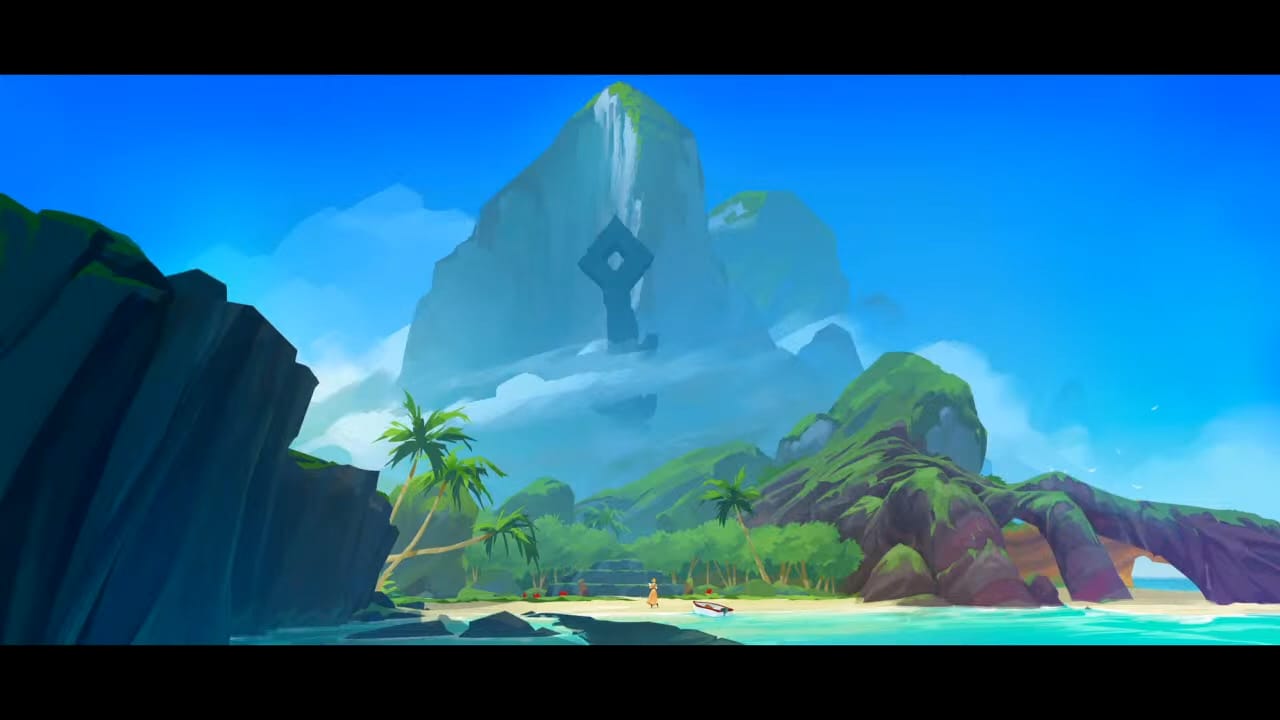
"Call of the Sea," the debut title from Out of the Blue (Spain), has been celebrated as one of the best games of 2021, securing high scores from game critics and accolades (awards and nominations) from major game industry events, including the BAFTA Games, IGN, TIGA, DEVUEGO, NYX GAME AWARDS, and many more.
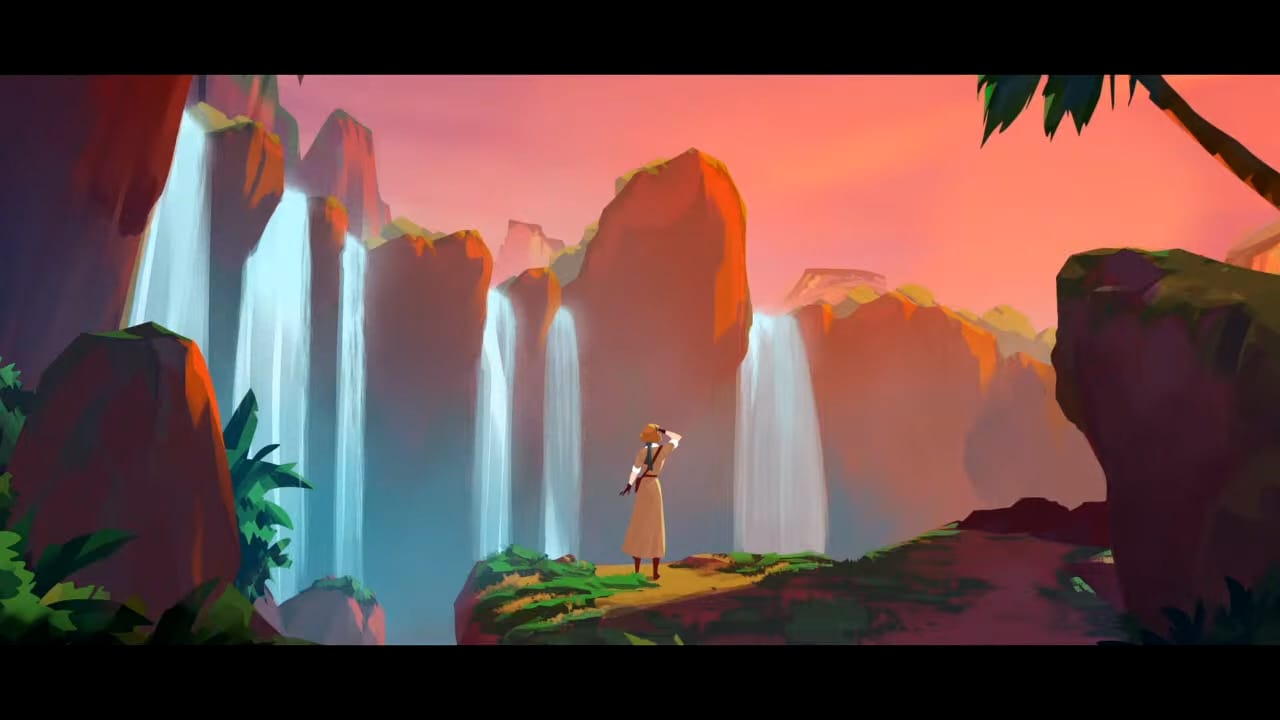
The game describes itself as follows: "Call of the Sea is a first-person adventure puzzle game set in the 1930s that tells the story of Norah, a woman on the trail of her missing husband’s expedition. The search takes place on a strange but beautiful island in the South Pacific, filled with secrets waiting to be unearthed. It is an otherworldly tale of mystery, adventure, and self-discovery."

First Impressions
I was stunned by this immersive experience. The opening scene alone is a testament to the artistry, care and passion invested in the game. I quickly became hooked by the story; the characters, stakes, and premise are established with elegant simplicity and sobriety, leading into a more complex and elusive mystery. From the first 15 minutes of gameplay, it's clear that "Call of the Sea" is set to be a real treat—and guess what? It is!
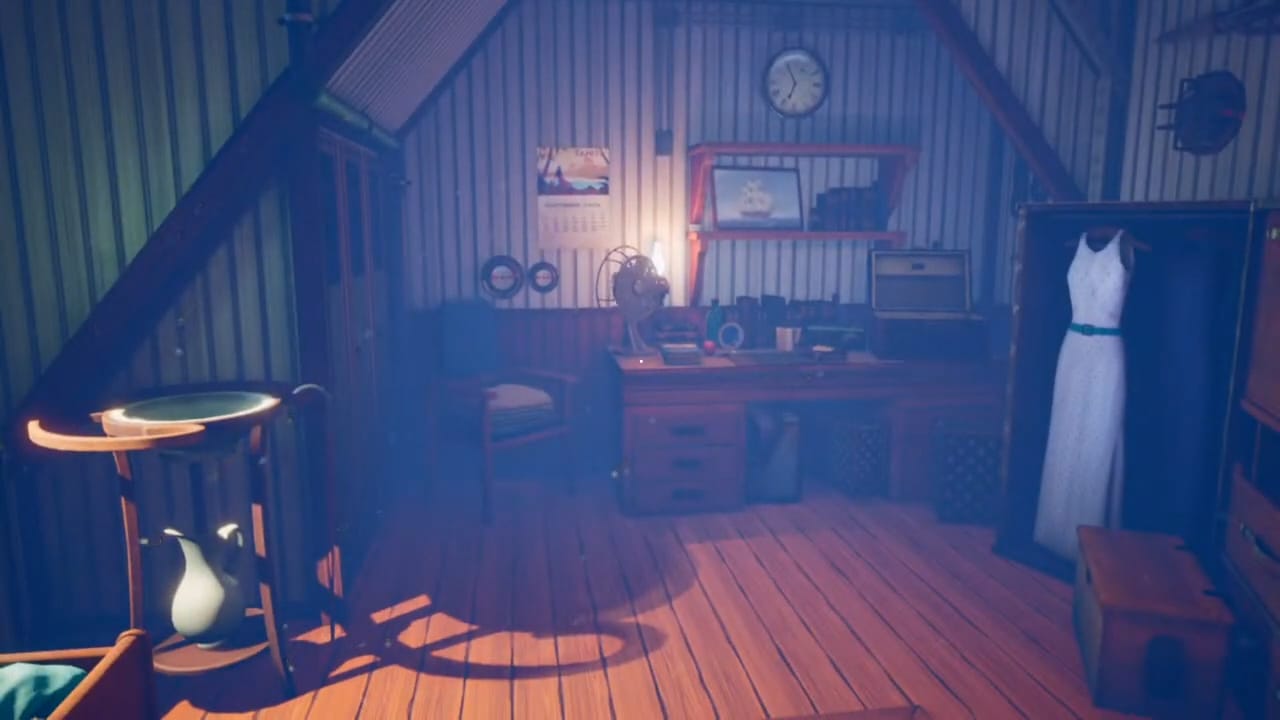
As a big fan of "Firewatch," I can appreciate similarities between the two titles, but I also want to take "Call of the Sea" at face value. As such, it would be unfair to overlook the qualities and achievements of "Call of the Sea" by making a broad and obtuse comparison between the two—so I won't. Play both. They are amazing.

Finally, the legendary Cissy Jones brings Norah to life in the most sentimental way, carrying the emotions of the game with depth, nuance, and range. Cissy Jones's contribution to the game is a huge stamp of approval in my books, as one of the most renowned and prestigious voice actors in the game industry. I was thrilled to know she was cast as the protagnist and was absolutely delighted with her performance. Norah's husband, Harry, is voiced by the one and only Yuri Lowenthal.
Game Narrative
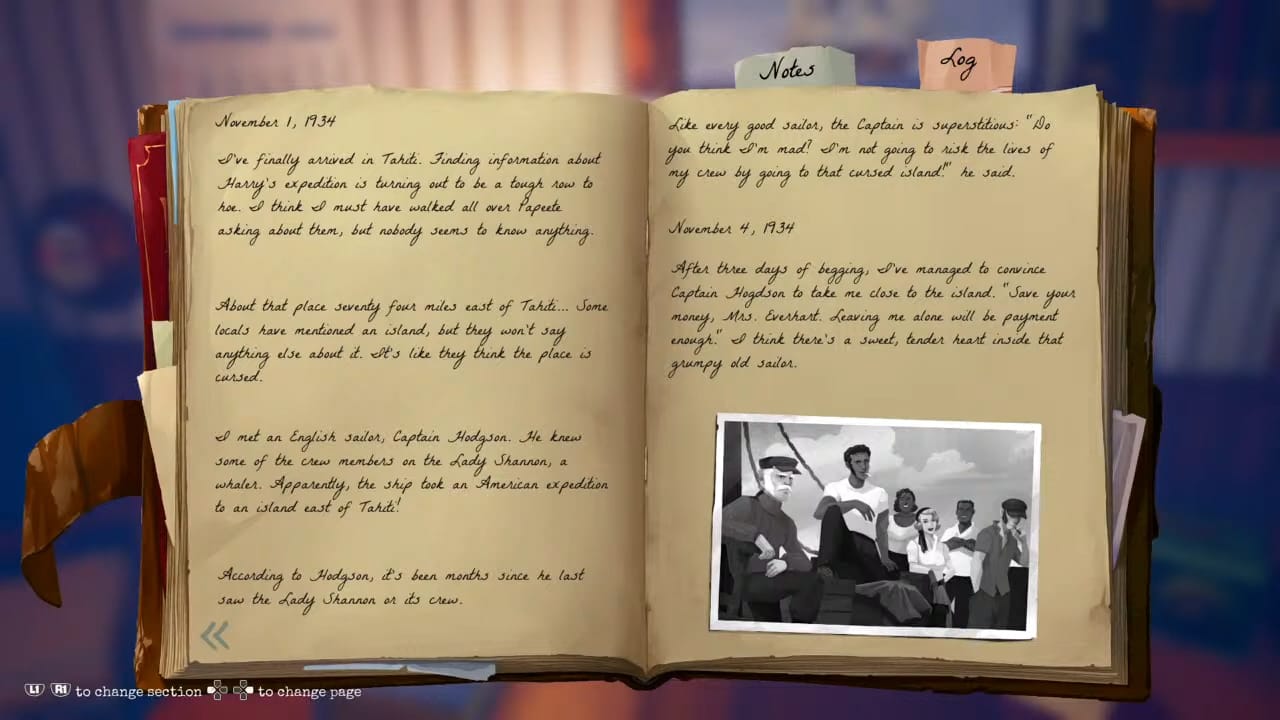
The context of the story set in the early 1930s is depicted via an epistolary format (letters, journals, and printed media), reinforcing the literary quality of the game while framing the adventure in the heart of the Lovecraftian era.
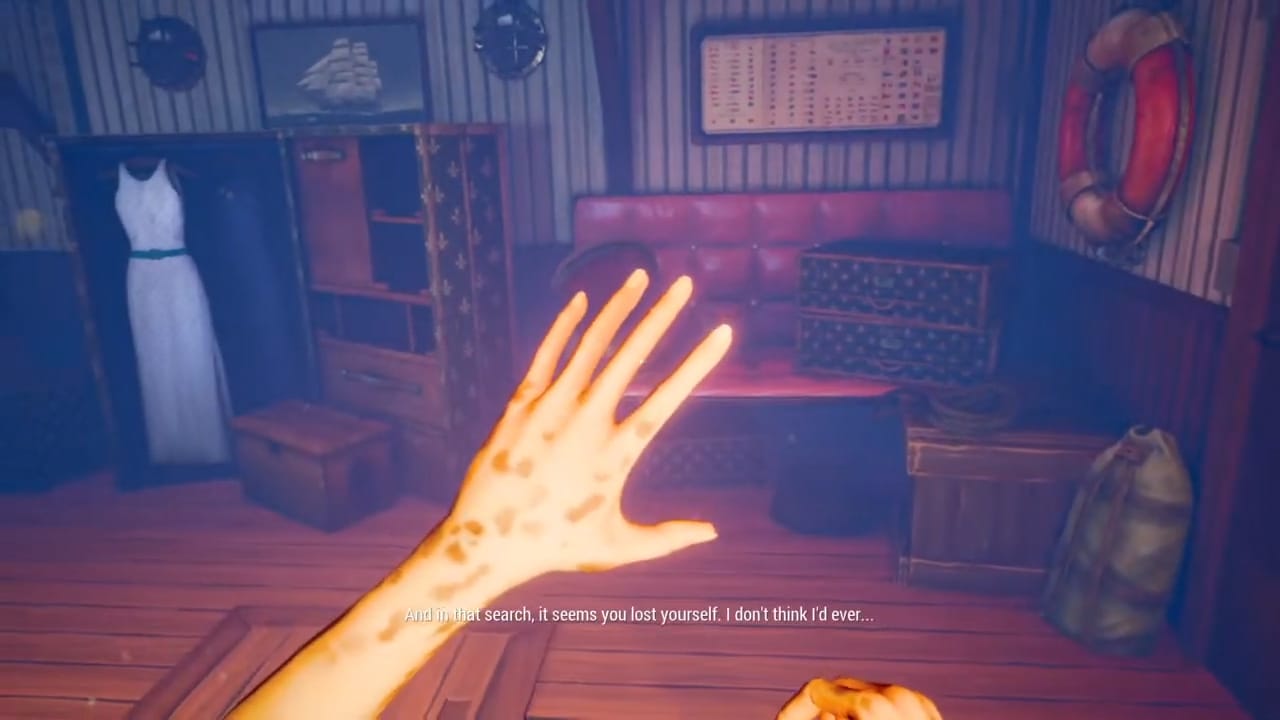
We learn early on that Norah has inherited a strange music box after the passing of her mother, has had repetitive dreams of a surreal underwater realm ever since, and has developed a strange disease she calls her 'dalmatian spots'—apparently something running in her family. The doctors are clueless about her condition, and Harry (her husband) has risen to the challenge to find a cure for her. What is affecting her remains elusive at this time, but I am certain we will know more about this very soon.
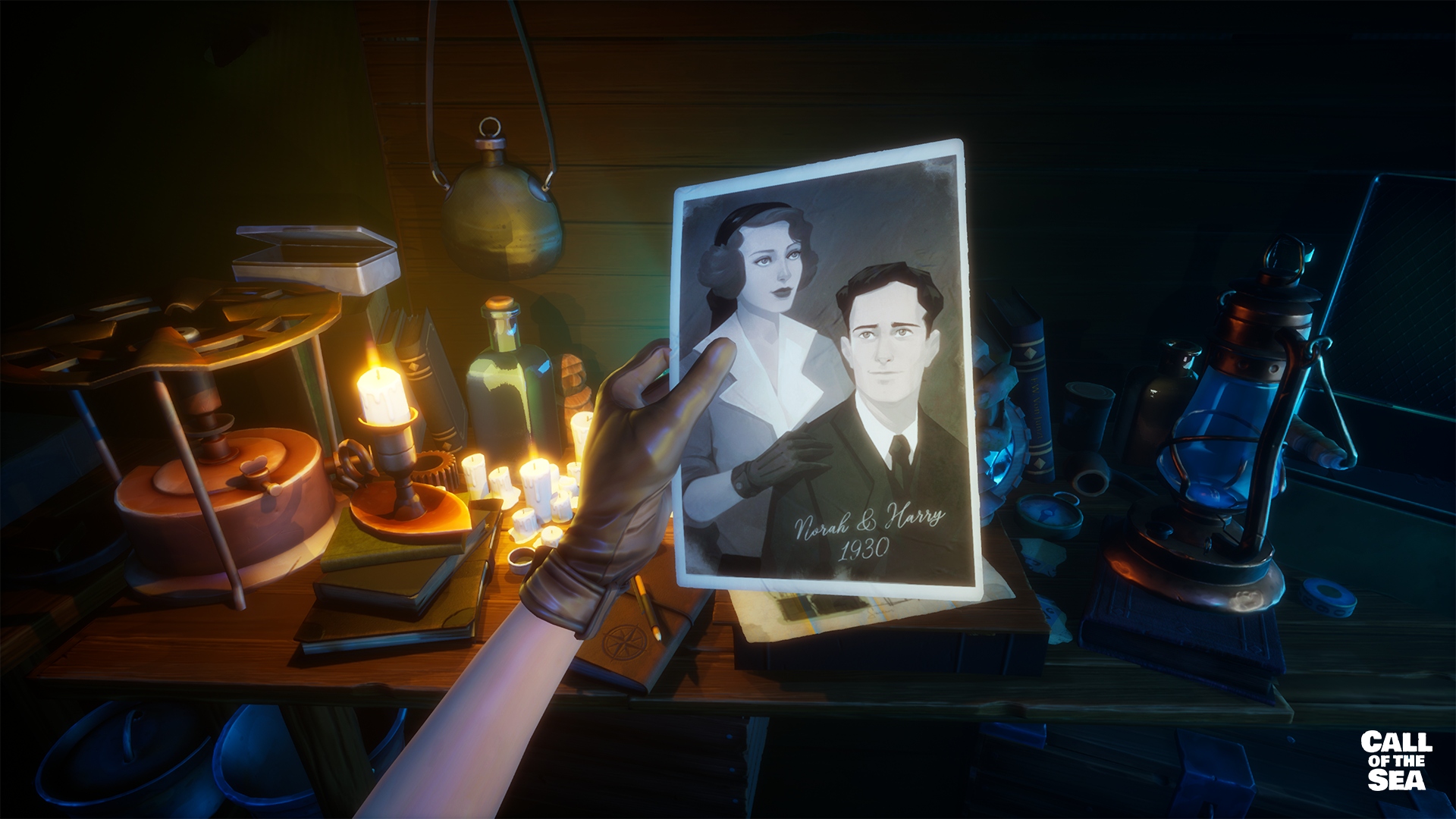
Her relationship with Harry is very passionate, and the expression of her sentiment reveals the longing she has to be reunited with him. Harry has left to travel the world in the hope of finding a remedy for her disease, but it has been 3 months since she last heard from him... As such, she decides to follow his trail across the seven seas down to a small island located 74 miles east of Otaheite. An island that even the local sailors do not wish to speak the name of...
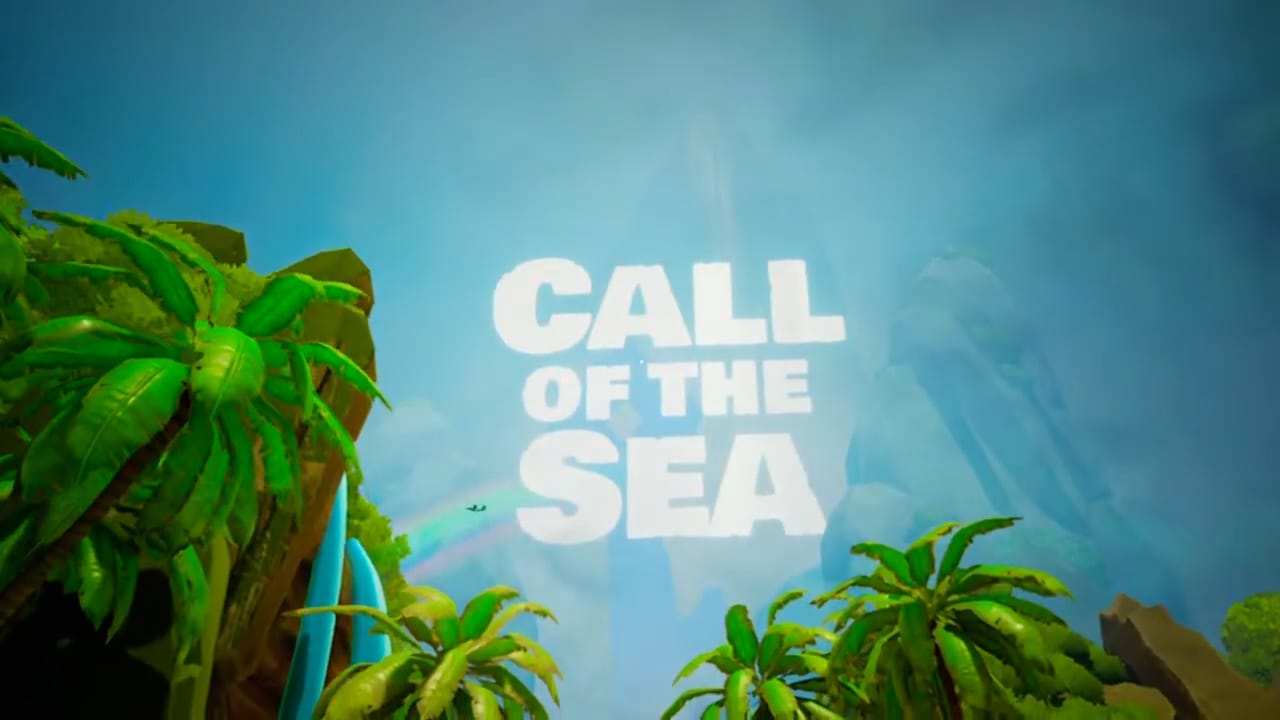
Norah, being very persuasive and determined, will convince an old sea captain to take her to the island. He will stay ashore, giving her the promise to return in three days... and so her adventure begins!
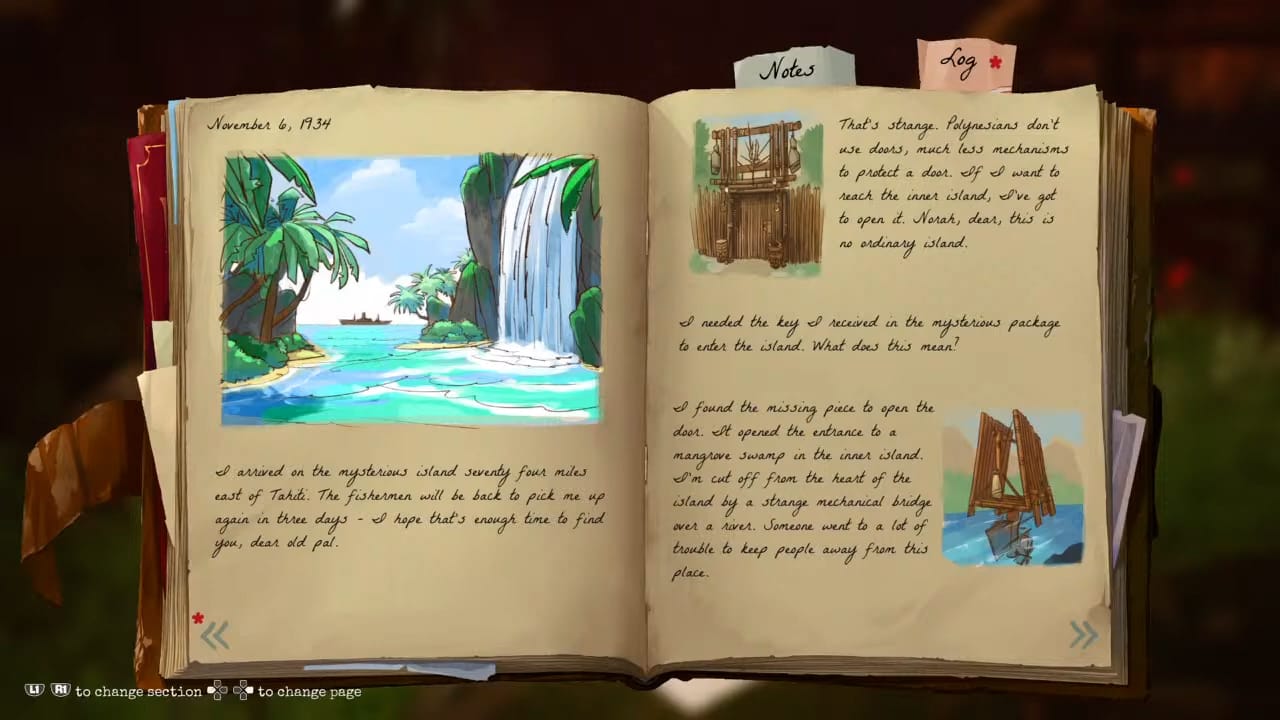
As Norah steps onto the remote island, she makes use of her notebook to journal her adventure, draw from observation, collect visual clues, and gather more details of interest. This notebook becomes a valuable companion for her adventure, not only as a point of reference for solving puzzles and mysteries, but also to allow the player to appreciate her views, emotions, assumptions, and to understand how far she has come to be reunited with her 'old pal' Harry.
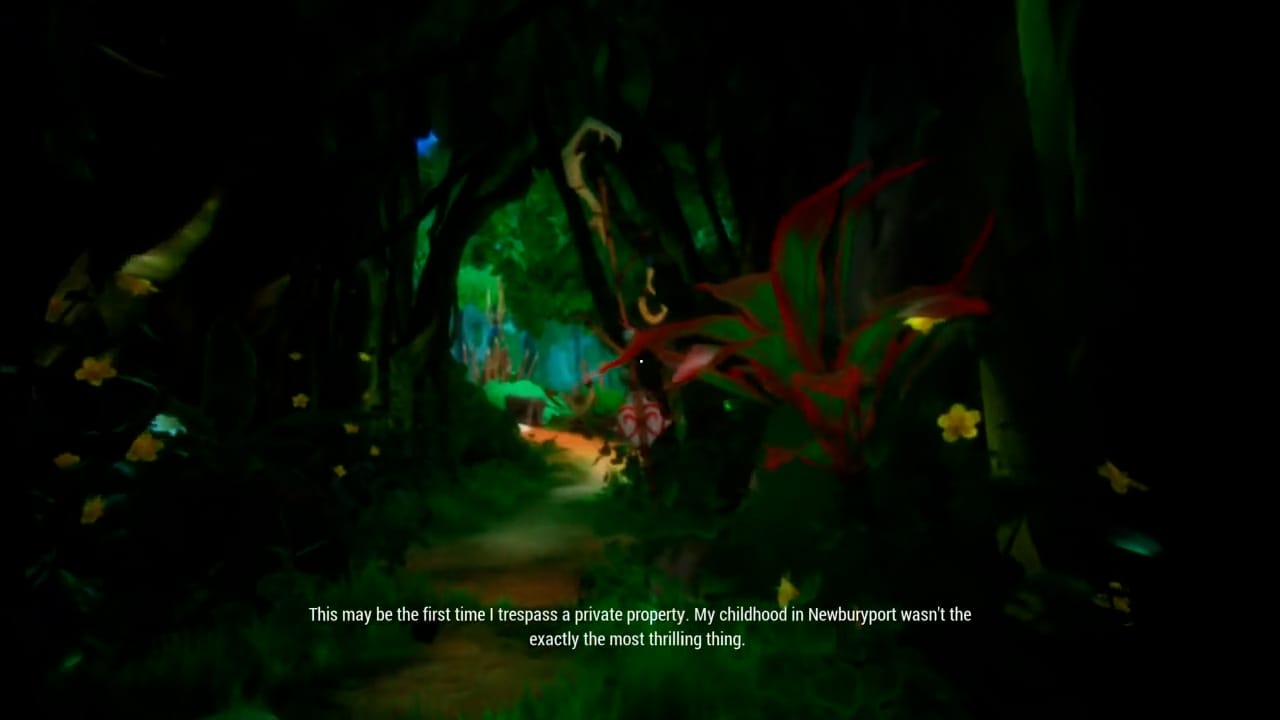
Norah's inner voice is expressed as an ongoing stream of consciousness, noting her surroundings, sharing details of her backstory, commenting on her condition, and her relationship with Harry. This voice fills the screen with humor, sentiments, and humanity, operating in direct contrast with an environment that is, at least at this point, devoid of inhabitants.

Game Mechanics
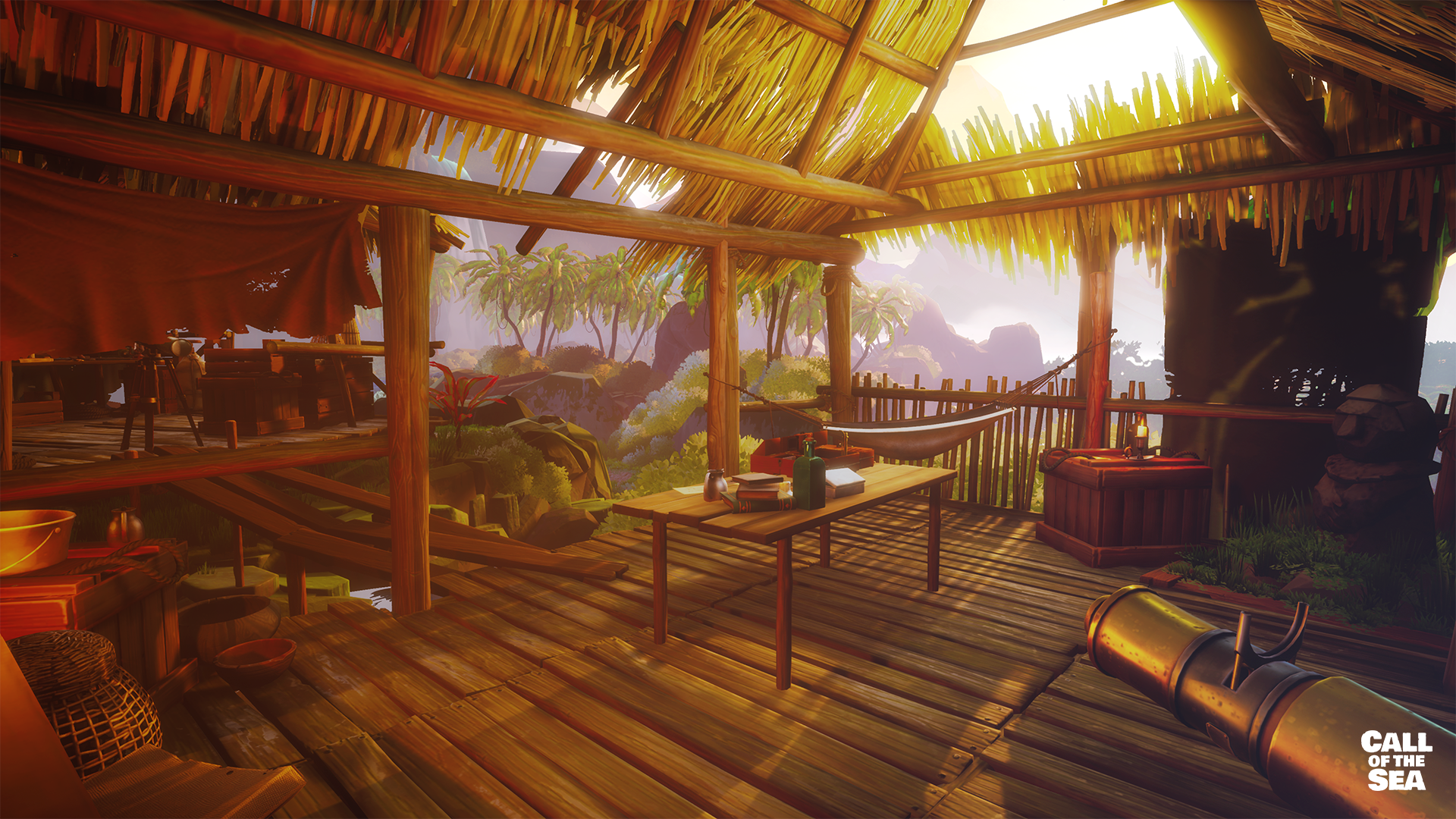
Fully immersive, the game mechanics are mostly focused on exploration, object interactions, and puzzle-solving. The screen is cleared from any user interface, and the controller is mainly used to walk, watch, and interact with objects. Special actions and movements are prompted with discreet icons that do not compromise the aesthetic of the environment, keeping the whole experience visually coherent.
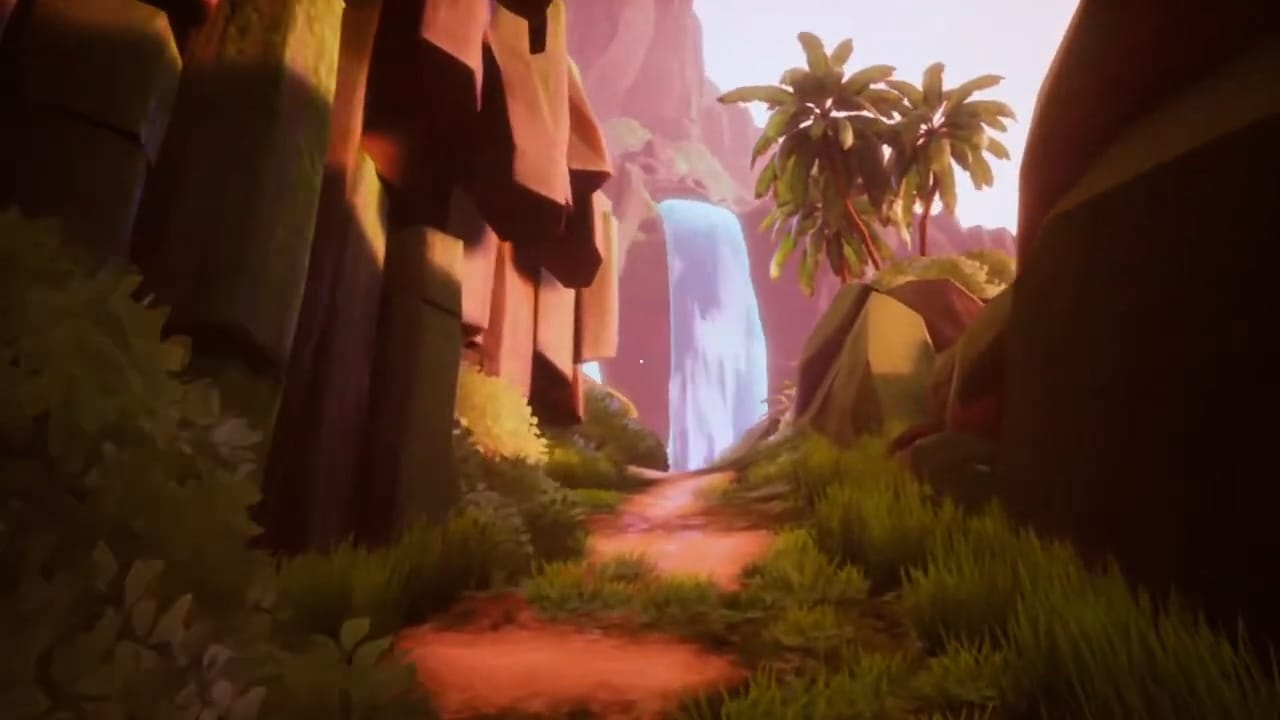
The scale of exploration is akin to that of "Myst" (yes, I'm that old), allowing pockets of free-roaming spaces connected by singular (or interconnected) paths. The environment is used to funnel Norah's progression from one place to another, offering the chance to discover stunning sights or inducing a mild feeling of claustrophobia at times.
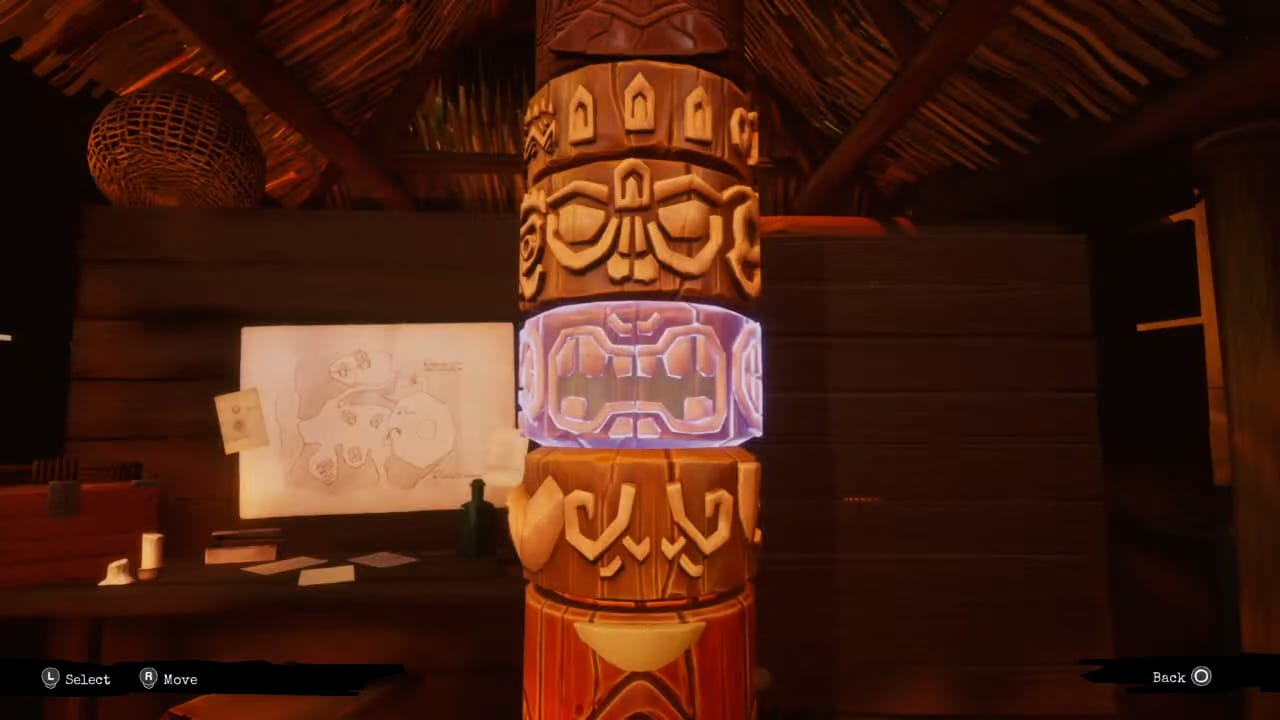
Puzzles operate as gatekeepers (so far in the game), allowing bridges to unfold for further crossing or unlocking doors so Norah can access the next free-roaming space to explore. The puzzle-solving activities can be a little challenging - it feels like a twist will always be there to question your assumptions. You will have to consider Norah's strategy for note-taking as well, as the order in which she reports clues might be different from the way they need to be used (my one pro tip).
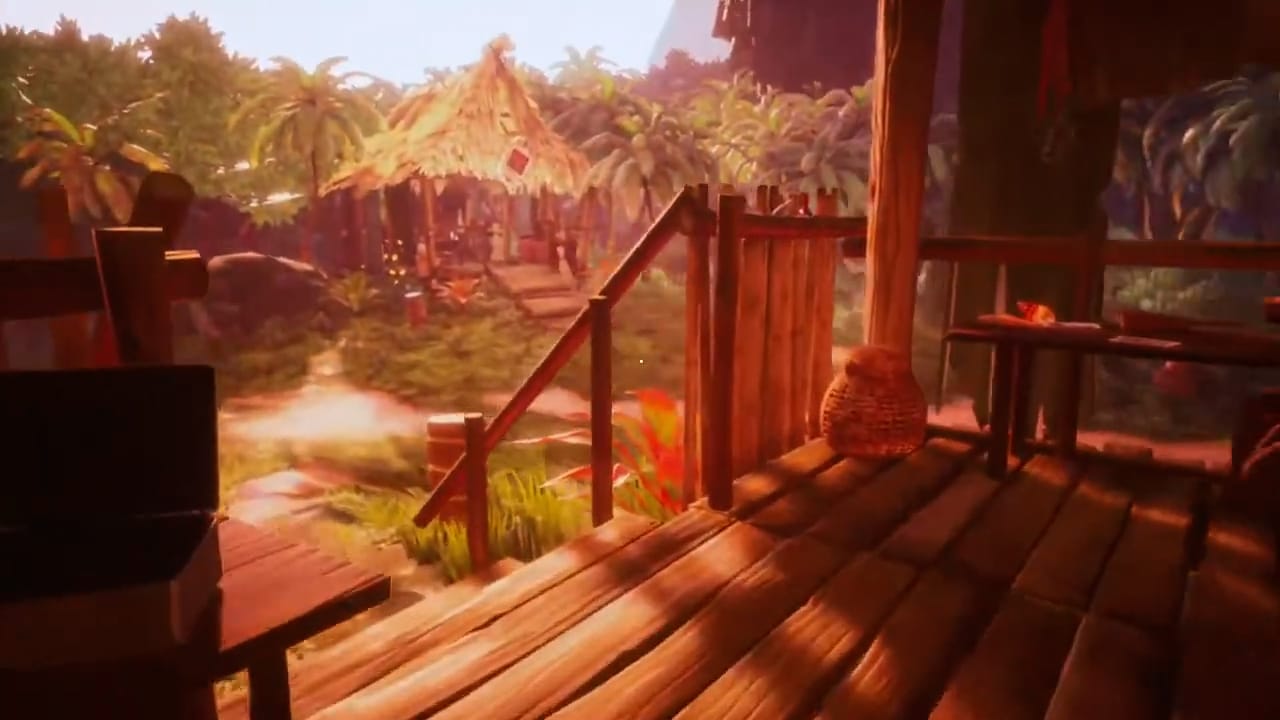
Besides the pressure of the narrative, the pace of the game is leisurely. You can take all the time you need to get fully immersed in this world and integrate the elements of the narrative at play. Knowing Norah cannot run, carry weapons, or have health levels depleted, the gameplay feels very safe and relaxing.

Session Highlights
I had a great time exploring what appears to be the first two chapters of the game. Some key moments stayed with me as I was writing this article - here are my favorite highlights so far:
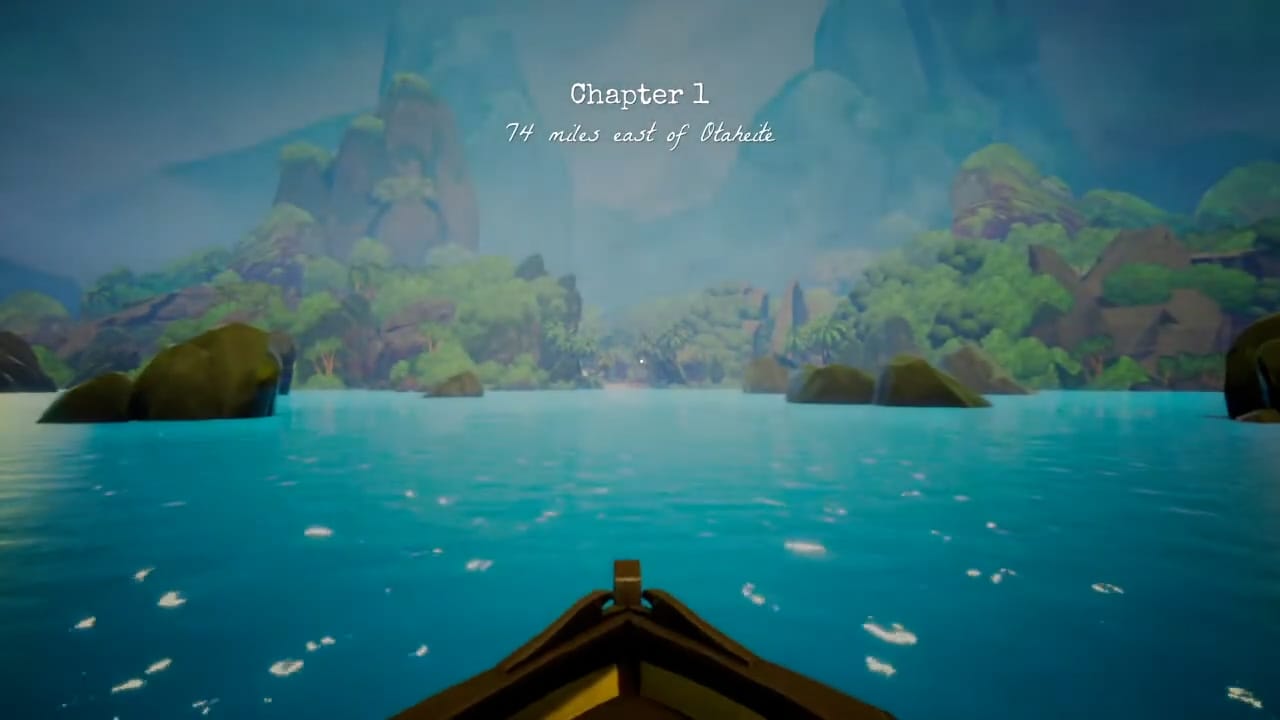
Story First - "Call of the Sea" is an interactive story. Sure, it's also a first-person-walking-adventure-puzzle-simulator – but it's a story first. The motivation of the characters to save each other is at the heart of what appears to be a Lovecraftian love story. The character of Norah is gripping. Her sentiments towards Harry are manifested by deep affection, determination, and courage. The entire journey leading her to the island is a film of its own, showing how motivated and committed she is to be reunited with her loved one. The theme of change and transformation is also very central at an early stage of the narrative, which is very appealing for the stance of character development. I am intrigued about her dreams, her condition, that broken music box, and why she appears to feel better in the proximity of the ocean. The connection between the title and the mysterious voice calling her name during the prologue scene is undeniable - but, here as well, I am expecting to have my assumptions challenged and to enjoy unexpected reveals.
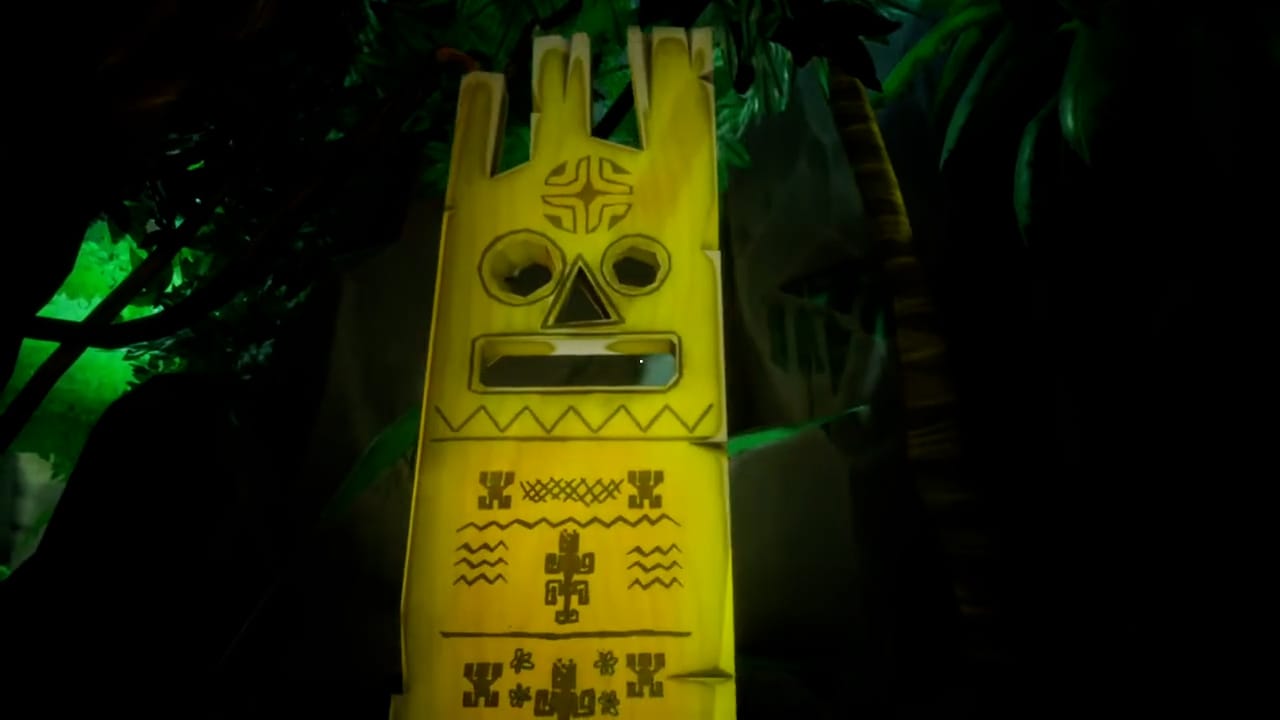
Rich Biome - The biome of the island is rich, beautiful, and mesmerizing. The art direction paints this world with a curated palette of color and texture that brings the magic of this environment to life. The fairly low-poly render and gentle soft shading make this locale feel safe and playful, while the narrative is used to draw more depth into darker tones. The island also displays aspects of oceanic culture as a medium for storytelling—this is particularly striking with the painted wooden planks surrounding the first door, the symbols painted on the tops of the huts, and the carved 'guardians' of the campsite. It's a great way to visually inform the player about the backstory of this location while creating a soft degree of cultural shock (either local to the island or beyond our realm). You are not certain to understand 100% what you are seeing, but you can piece two and two together to speculate that something old, and somewhat dangerous, is living on the island.
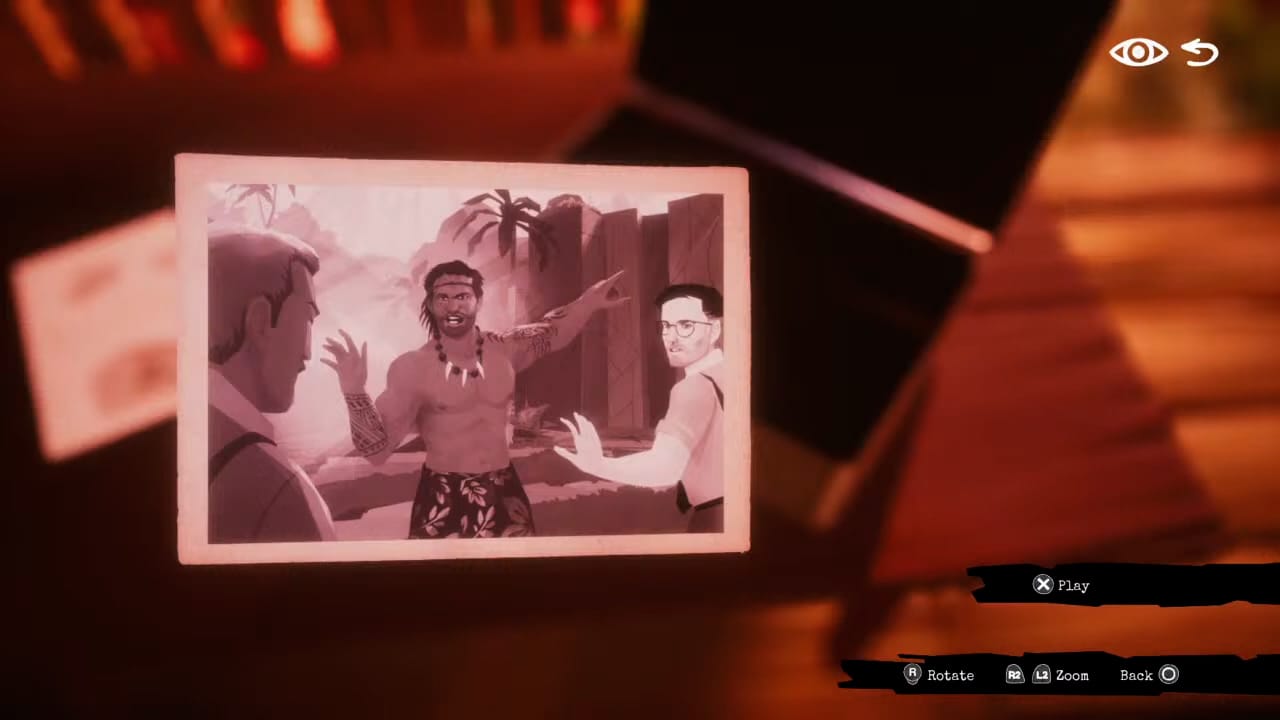
Foreshadowing - The foreshadowing of tragic events surrounding Harry's crew is depicted with majestic execution of 'show-don't-tell', as you pick up on clues to form a view of 'why' and 'how' this all started. Sure, you have more linear narrative tools at play, but the focus on 'exploration first' tells the story visually through strategic positioning of set pieces, props, and pictures, telling the player a story before it's confirmed by verbal cues, recordings, or letters. It's a great demonstration of visual storytelling and narrative design.
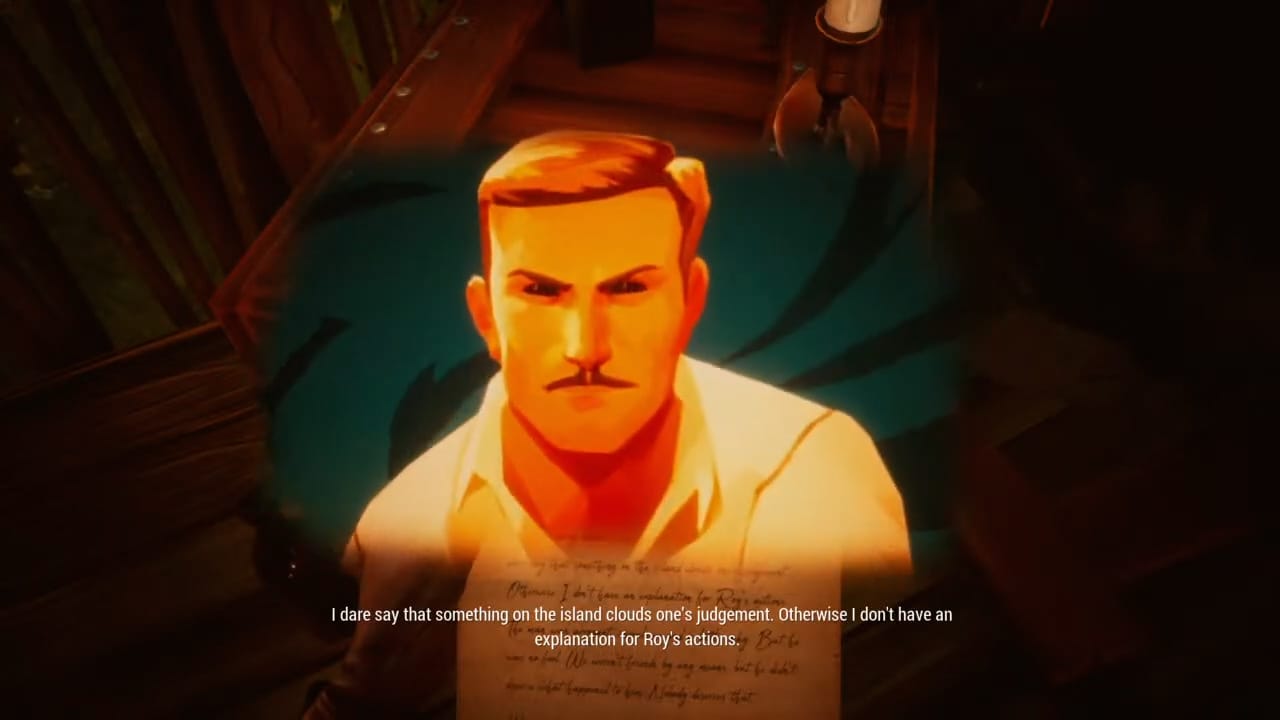
Point of View - The letter from Harry in the camp stands out from all other types of voice-over and epistolary elements experienced in the game so far. As Norah takes the letter, we are presented with a beautiful cutscene showing a strange and mysterious situation affecting one of the crew members. In this instance, the voice of Harry is heard for the first time, worried at the sight of an unexplained event. A change in visual style and color palette also underlines this change of narrative point of view. While it may initially appear as a form of narrative dissonance, I expect similar interventions from Harry to reoccur in the near future. This change of perspective also establishes Harry as the second narrator of the game, preceding the steps of Norah into the island...

Last Words
"Call of the Sea" is a very promising game that I look forward to exploring further. Needless to say, the game strikes a beautiful balance between narrative, investigation, and puzzle-solving – but in a way that is never expected.
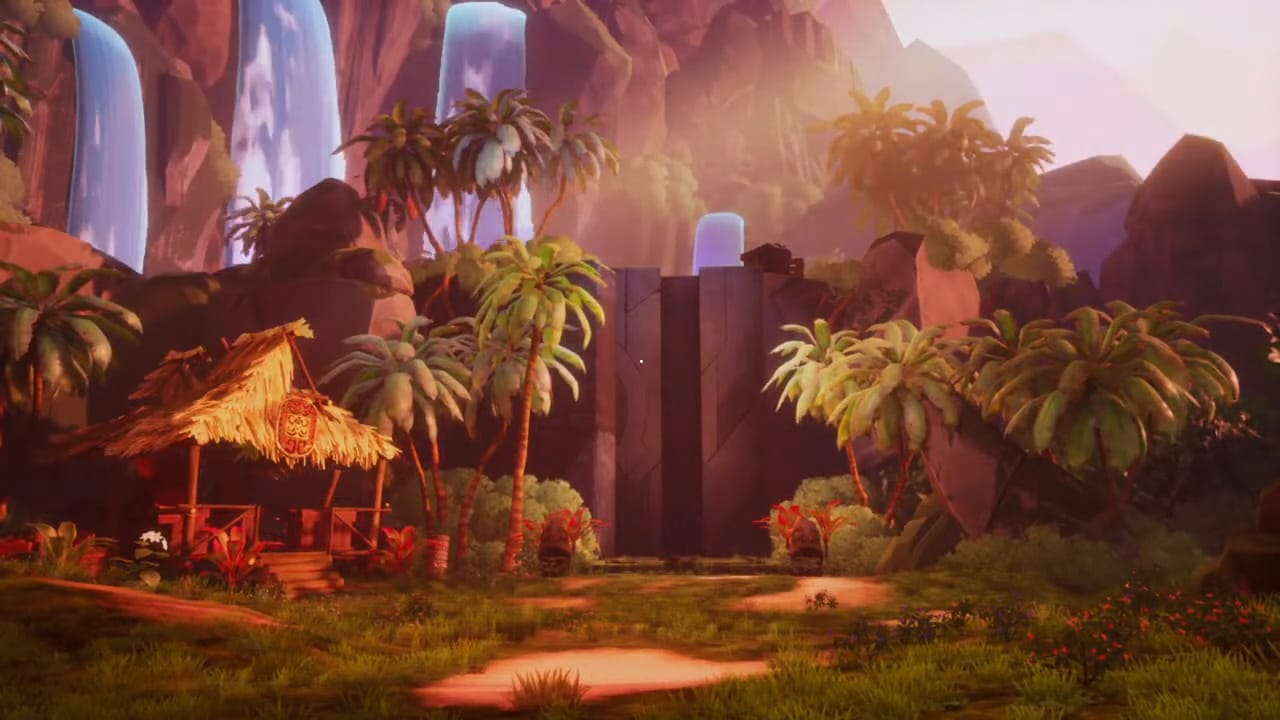
From this short session alone, I believe this game truly deserves all the accolades it has collected over the years, and is not only a great tribute to the Lovecraft mythos but also a great introduction to story-driven games more generally. While the game might have soft supernatural undertones, I feel like I'm playing in a safe, playful, and relaxing environment. After two hours of play, I was left wanting to know more about Norah, Harry, the missing crew, and what is happening on this island...

Many thanks to Cara and Les Jeudis d'Outre-Manche (Loki) for your kind support and comments in the chat of the stream - it means a lot.

Get 'Call of the Sea'
The game is available on Steam | Xbox | Playstore | Epic Game Store | Gog Com | Humble Bundle | Meta (VR) (no affiliation links)

Game Credit Credits
Call of the Sea is the debut title from Out of the Blue, a game developer studio based in Spain. © Copyright 2020-2021 Out of the Blue Games S.L. All Rights Reserved. The game is rated Pegi 7 and 'T' for Teen. Official Website | Twitter | Facebook | Instagram
